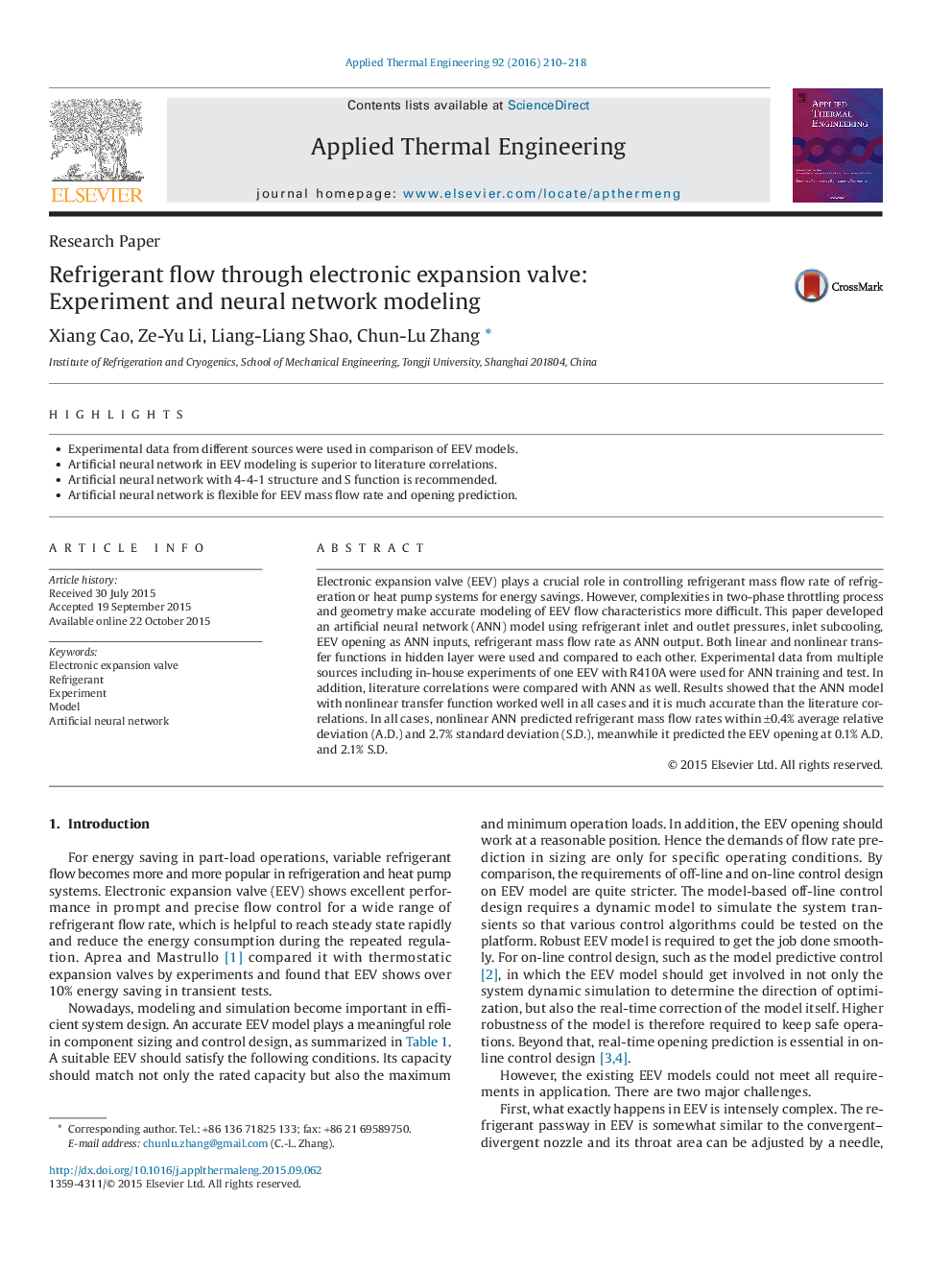| Article ID | Journal | Published Year | Pages | File Type |
|---|---|---|---|---|
| 645038 | Applied Thermal Engineering | 2016 | 9 Pages |
•Experimental data from different sources were used in comparison of EEV models.•Artificial neural network in EEV modeling is superior to literature correlations.•Artificial neural network with 4-4-1 structure and S function is recommended.•Artificial neural network is flexible for EEV mass flow rate and opening prediction.
Electronic expansion valve (EEV) plays a crucial role in controlling refrigerant mass flow rate of refrigeration or heat pump systems for energy savings. However, complexities in two-phase throttling process and geometry make accurate modeling of EEV flow characteristics more difficult. This paper developed an artificial neural network (ANN) model using refrigerant inlet and outlet pressures, inlet subcooling, EEV opening as ANN inputs, refrigerant mass flow rate as ANN output. Both linear and nonlinear transfer functions in hidden layer were used and compared to each other. Experimental data from multiple sources including in-house experiments of one EEV with R410A were used for ANN training and test. In addition, literature correlations were compared with ANN as well. Results showed that the ANN model with nonlinear transfer function worked well in all cases and it is much accurate than the literature correlations. In all cases, nonlinear ANN predicted refrigerant mass flow rates within ±0.4% average relative deviation (A.D.) and 2.7% standard deviation (S.D.), meanwhile it predicted the EEV opening at 0.1% A.D. and 2.1% S.D.
